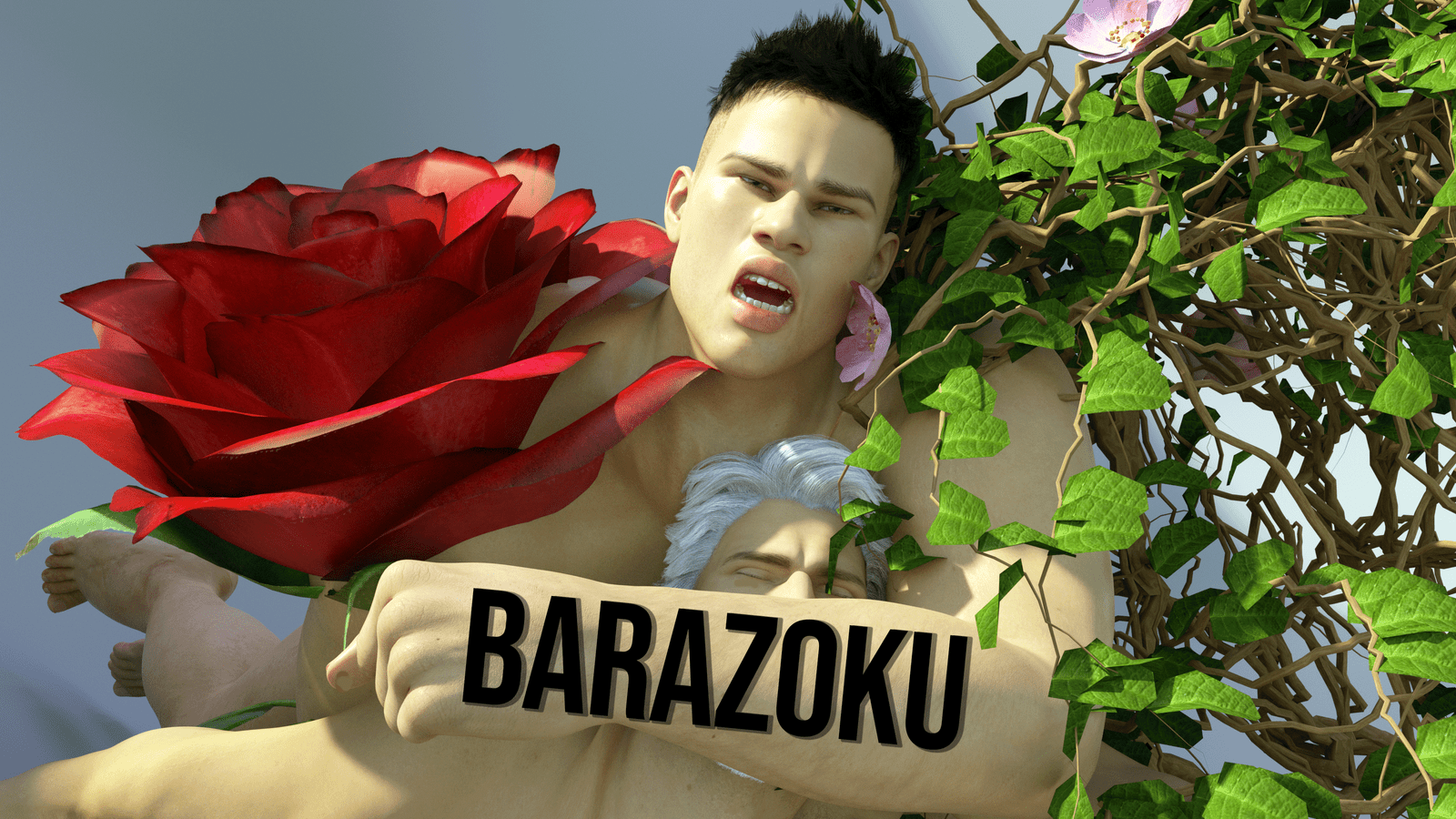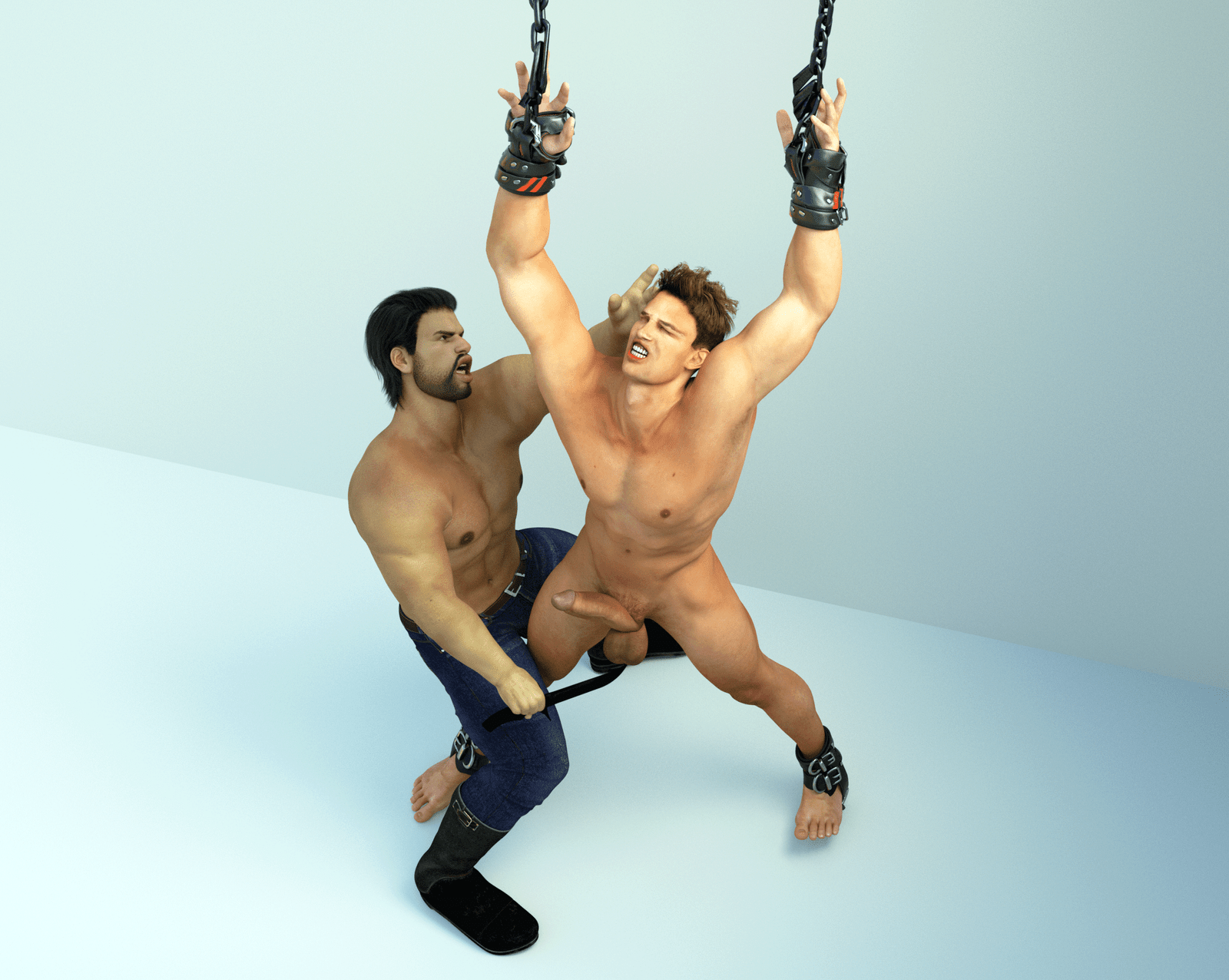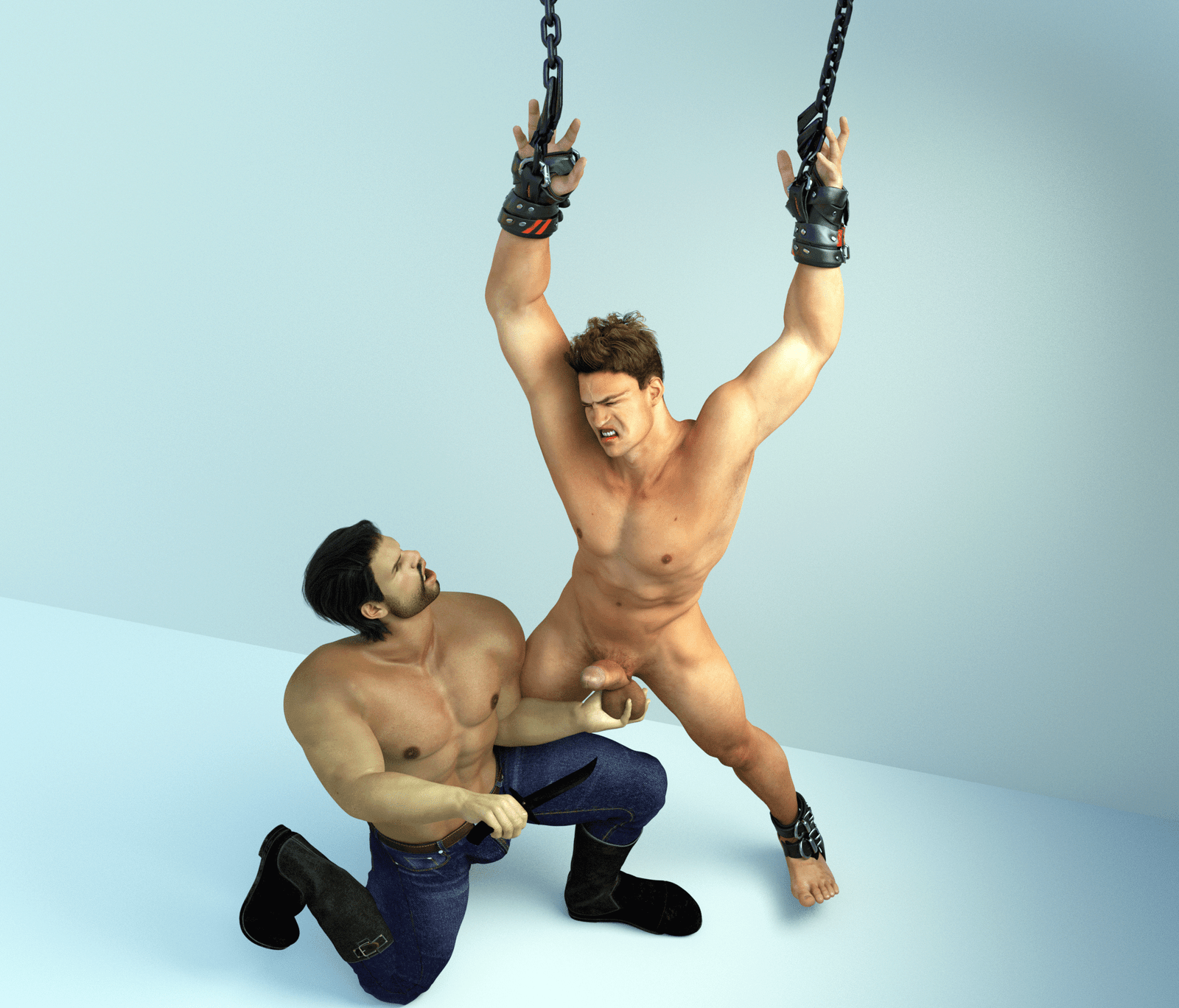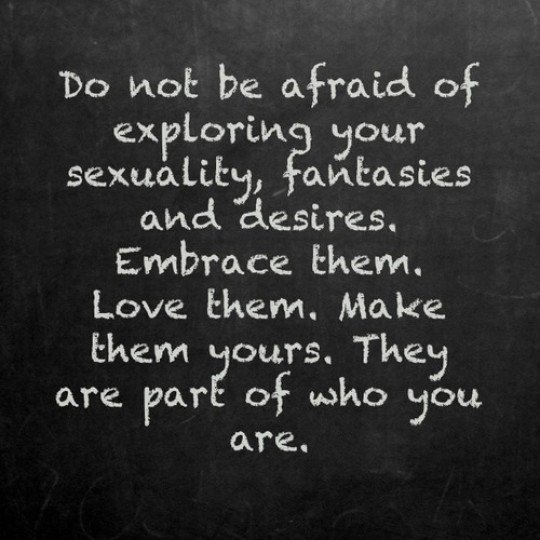What is Bara?This underground art genre known as bara originated in Japan. The word bara in Japanese literally means rose as in the flower. It is shortened from barazoku which means “rose tribe.”
This was a code phrase that mocked gay men in Japan as being sissies or effeminate. Yet, this was the name chosen proudly for a gay men’s magazine published in the Japanese language from 1971 until 2008. The word bara is no longer used in Japan, but it was picked up for common usage throughout the Western world starting in the 20th century to describe a distinctive type of underground art unlike other types.  Madeira Desouza’s art and storytelling, rooted in the bara underground art genre, is free for viewing and downloading at this “Men Hurting Men” site. Enjoy what you find here as you learn about the societal and cultural significances of bara that remain in the 21st century.
Bara is by Gay Men for Gay MenAt its most simple basic level, works within the bara genre by intent depict men hurting men. This genre does NOT depict romanticized notions such as in Hollywood movies and television shows in which men fall in love with other men and they all live happily ever after.The bara genre is about sexualized enjoyment of pain that men easily are capable of inflicting upon other men. Most gay men know that there is sexualized enjoyment felt by the man who is hurting the other man. Also there is sexualized enjoyment felt by the man who is getting hurt. It should be of no surprise to anyone that such a focus in art and storytelling is produced by gay men for gay men. 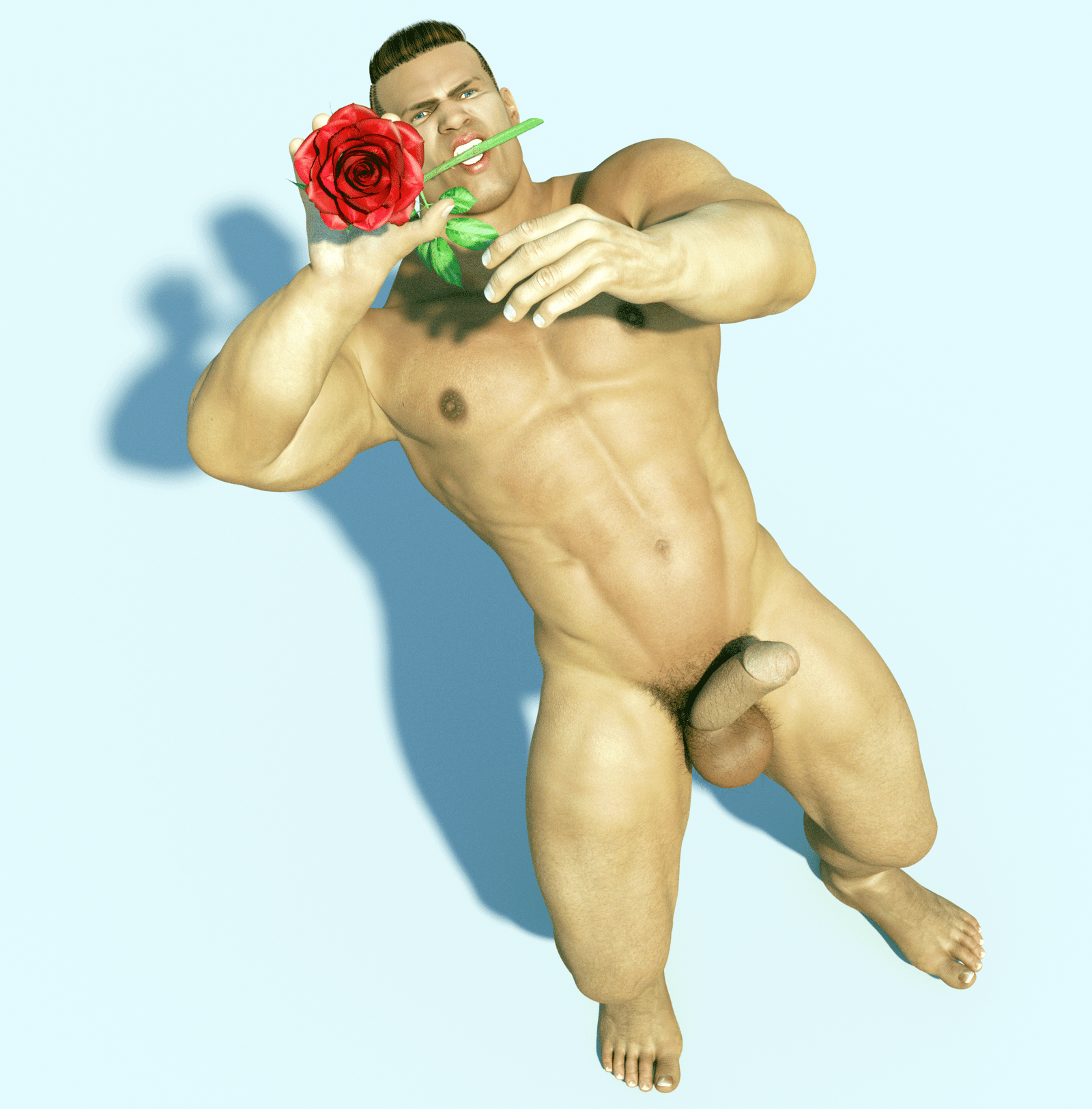 This genre known as bara differs from the genre known as yaoi which is created by female storyteller/artists for a female audience. Madeira Desouza explains: “I am not at all interested in creating stories or images of men who appear or behave or speak like females as you can find today in a great deal of content online intended for the gay male audience. Feminized males as a theme holds a prominent place in the entertainment world.“ Masculine Men Hurting Other Masculine Men“I choose to create stories and images of masculine men hurting other masculine men. This particular approach depicting all-male peril is also known as guys in distress or men in distress. The imagery I create shows men who exhibit outward appearances that reveal their optimum physical condition and muscles.”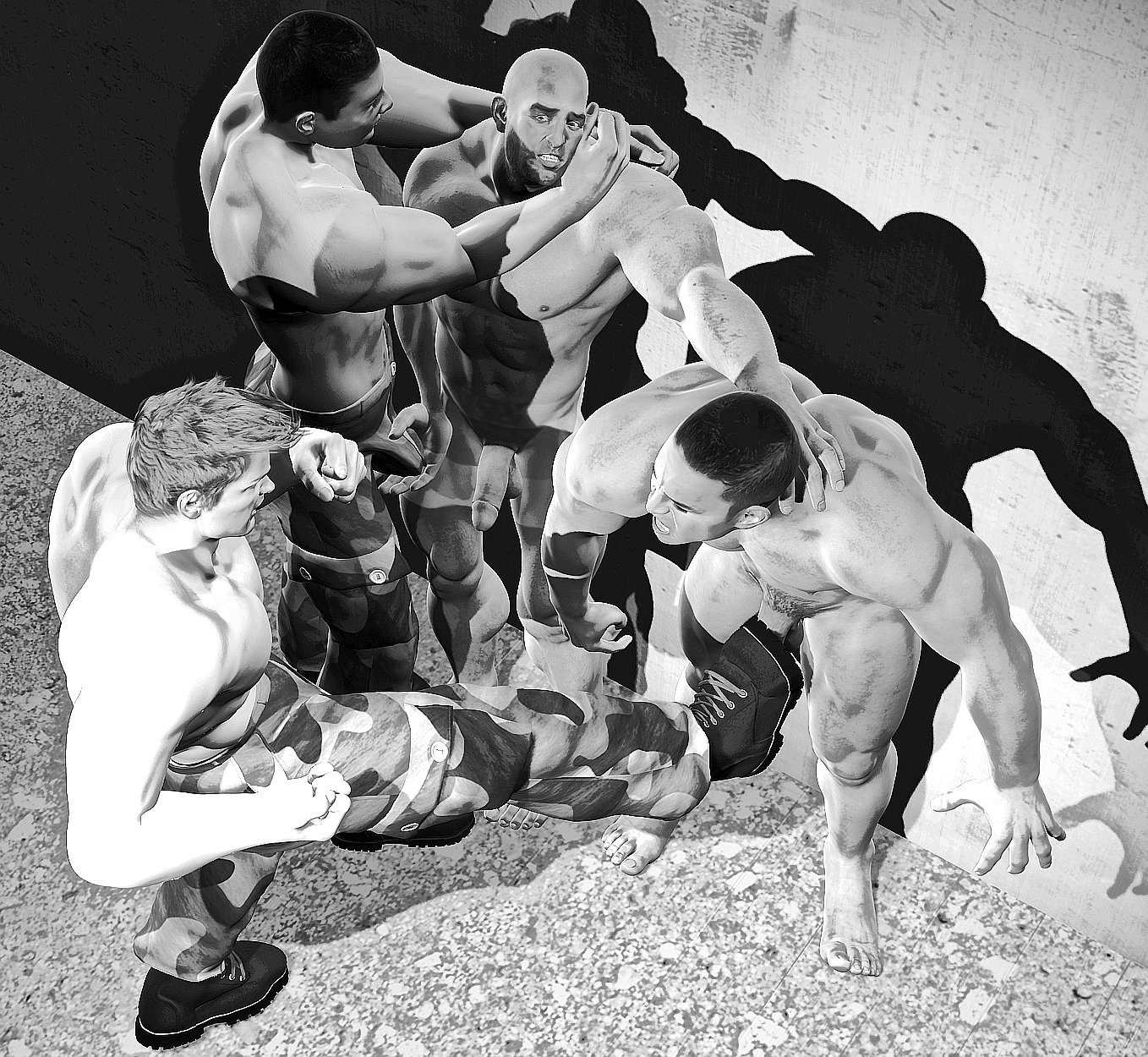 This black and white illustration of military men on this page depicted in the bara underground art genre was censored by Deviant Art, which is marketed as “the world’s largest online art gallery and community.” Deviant Art routinely censors the work of artists. Madeira Desouza has been censored by Deviant Art so he has knows the perils of dealing with censorship. The credibility of Deviant Art is quite low because the Deviant Art people (or apps) doing such censorship proves a complete lack of artistic talent and sensibilities. Bara Explained in 5-minute YouTube VideoWatch this explainer video about bara that will take only five minutes of your time to watch.Bara distinctively depicts men in peril. Bara focuses upon gay male, same-sex feelings and sexual identity of masculine, muscular men who sometimes behave in aggressive, violent, or exploitative ways towards one another. Bara is not about romantic gay love or lovey-dovey hearts and flowers images or stories that make you fell all warm and cozy inside. In contrast, bara is wild, adventurous, and unflinching in how it mirrors real life men in peril and behaviors of male aggression, power trips, violent tendencies, and exploitation. Challenging the Notions of MasculinityMadeira Desouza’s artworks are known for featuring hypermasculine men, muscular, aggressive, and sexualized, often in stark contrast to the conventional portrayal of masculinity in mainstream media. The art of Madeira Desouza challenges the traditional notions of masculinity as a stoic and dominant force, instead portraying it as complicated, fluid, and at times, unstable.
This kind of depiction of men is what Madeira Desouza does consistently showing what one may consider the artist’s ideal of what masculinity can be. The artist depicts male characters who reveal well-defined muscles and aggressive energy. These male characters can be interpreted by the viewer as an idealized man or a most desirable man. What the artist does is take a different turn from what is typical of male character depictions online. His works show an emphasis on the male body is not only for the obvious sexual appeal, but also for showcasing a sense of vulnerability and exposure. The artist challenges the traditional representations of masculinity while questioning the societal paradigms that define masculinity. Madeira Desouza’s artwork presents men as vulnerable, emotionally complex beings who are subject to desire and are shaped by their surroundings.
Madeira Desouza’s art is in opposition to traditional notions of masculinity because it emphasizes the complexity and diversity which shape masculinity that can be found in day-to-day human life . By depicting men who may not conform to the heteronormative understanding of masculinity, he highlights the fluidity of gender and sexuality, and how these elements are merely social constructs rather than fixed, unchanging identities. Download the full series of sequential bara underground art genre images here: Bland, Plain Vanilla ThrillsThe more vanilla and bland works of young and shirtless gay men falling in love with other young and shirtless gay men leading to a happily-ever-after life certainly are a lot more safe and less emotionally challenging for the viewer and reader. Those works earn a “mass audience” of men as well as women. In contrast, the bara genre is less popular and has a smaller audience directly because the bara genre is more realistic versus idealistically romantic when depicting gay male behaviors.– – – – – Provocative StorytellingMadeira Desouza explains further: What I do is considered provocative. And that is my intention. When I look around me at the straight world, I see heterosexual people who prefer not to see masculine men experiencing sexualized pleasure from other men. This kind of sexualized pleasure is taboo for many people. Straight men and women tend to accept drag performers like RuPaul Charles, whom I greatly admire as an entertainment industry genius. I enjoy watching the RuPaul’s Drag Race series on Hulu. I was very entertained and was quite pleased with AJ and the Queen starring RuPaul in a Netflix comedy series. Straight people derive pleasure and amusement from male drag performers. As an audience, straight people enjoy laughs at the satirical comedy and the sexual ironies that RuPaul and other drag performers excel at. Such is the enjoyment of performance art, but we all know art usually is separated from the everyday life most of us live. Drag performers engage in performance art. Would you want to live, day-to-day around someone who is in drag performance art? Not me! Men who are drag performers are artists that I very much respect from my perspective as an audience member. But, art differs from real, everyday life. Performance art like male drag performers does not get me excited sexually. What gets me excited sexually are masculine men who speak and behave using masculine (not feminine) talk and actions. Hollywood StereotypesMajor Hollywood comedies featuring men in drag such as the wonderful Mike Nichols film The Birdcage are also “safe” and “unchallenging emotionally” for straight people. That nonthreatening kind of gay man is what seems to find a “mass audience” at least by Hollywood standards. But, I don’t work in Hollywood. I choose to depict muscular and masculine men in peril who may or may not connect with one another emotionally, physically and sexually. Feminized gay men can choose to speak and behave in flamboyant ways. They have a right in our society to do so. I respect their right to do so. But I work within the bara genre and use themes that include violence and exploitation and men in peril—not typically what appeals to the same audience that enjoys feminized gay men. Inner StruggleMy storytelling explores conflicting and opposing compulsions that all men have. These compulsions are not limited to gay men. On one side there are impulses men have towards sustaining life, engaging in love, and being attracted to other men and building long-lasting relationships. 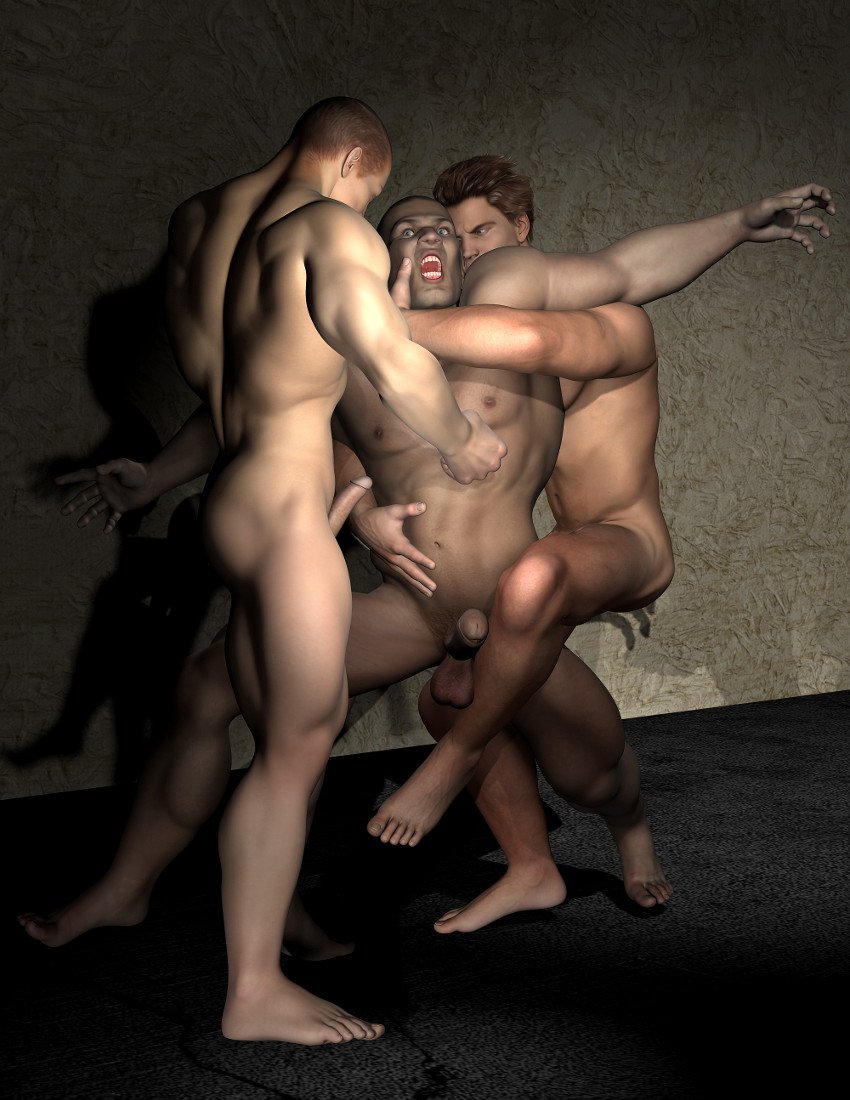 In the opposing direction are impulses men moving towards being aggressive, engaging in violence, creating situations of men in peril, and often culminating in men hurting men causing pain and death. For centuries, artists and storytellers around the world have found inspiration in these two opposing human compulsions that no man is able to resist or impede merely by his conscious will alone. Storytelling themes involving violence and/or people who hurt or kill others are quite common today and very easy to find in motion pictures and in television dramas. The Purge and The Hunger Games series of major Hollywood motion pictures, for instance, depict people brutally hunting, hurting, and killing other people within a government-sanctioned story context. Viewers are asked to suspend thinking about believing in an almighty deity when you watch such depictions of brutality and violence in The Purge and The Hunger Games films. Meanwhile in the real world in which we live, it is very easy for anyone to find visual evidence online of the brutal killing of men in certain parts of the world—often linked to the belief in one religion’s perceptions about an almighty deity compared to some other religion’s approach—and the outcome is men hurting men and men killing men in homicidal ways such as beheading, a bullet to the brain, hanging, drowning, impalement, and so forth. . . . . . . . . . . . . . . . . . . . . . . . . . . .
Be sure to visit BLEED AND HURT LIKE MEN DO for sizzling hot images within the bara underground art genre! |
Men Hurting Men
Art and stories of men hurting men
Copyright 2025 Madeira Desouza. All Rights Reserved. Email him at desouza3d@gmail.com.

